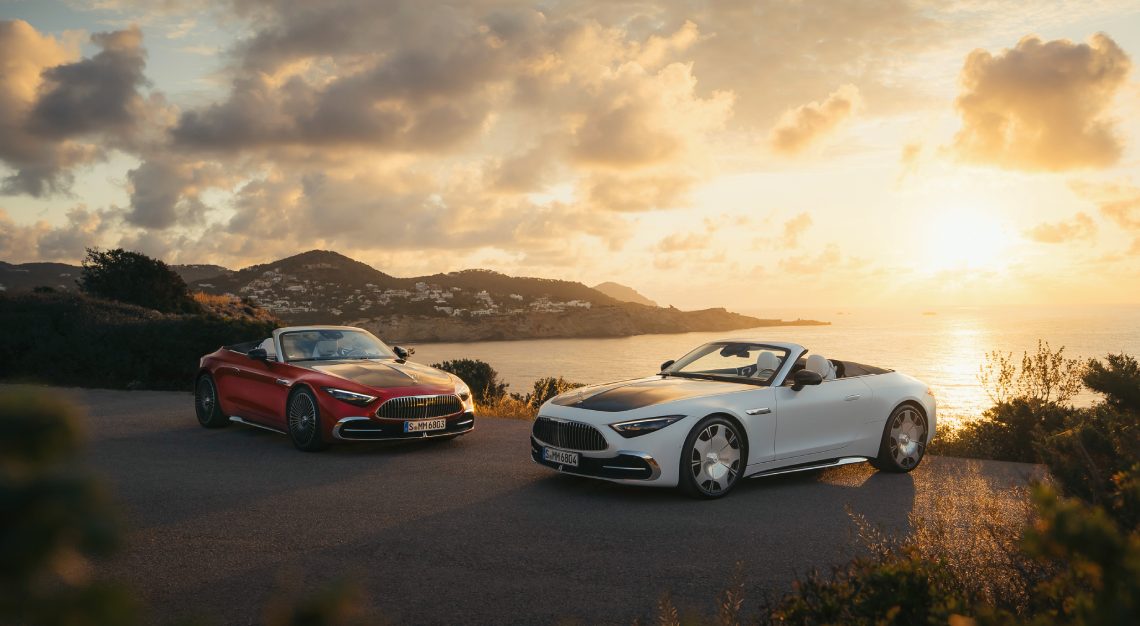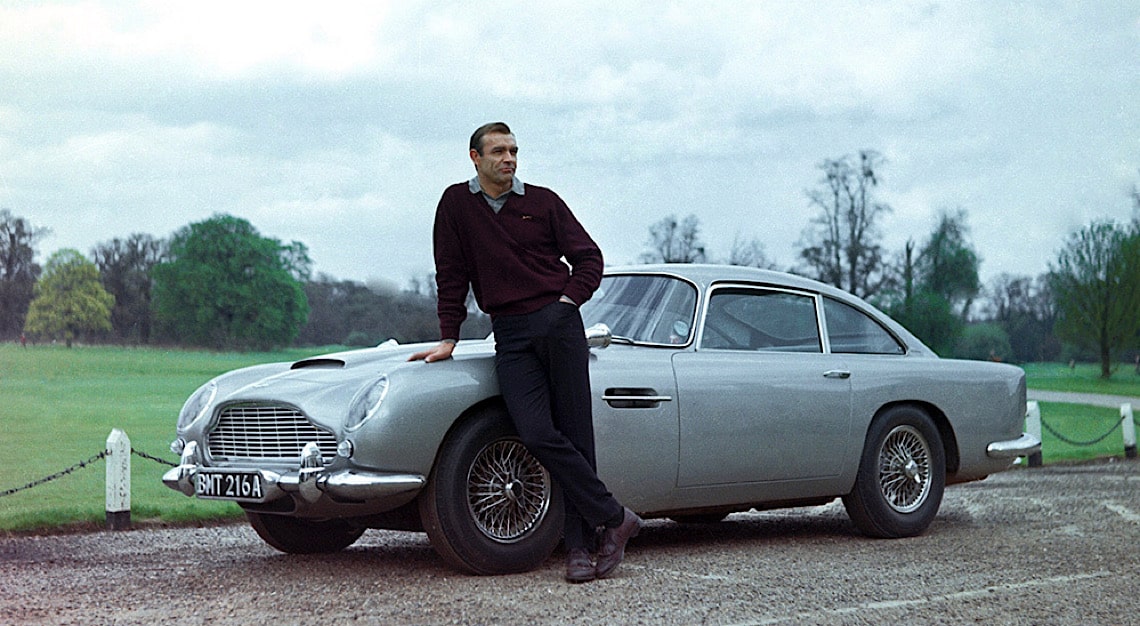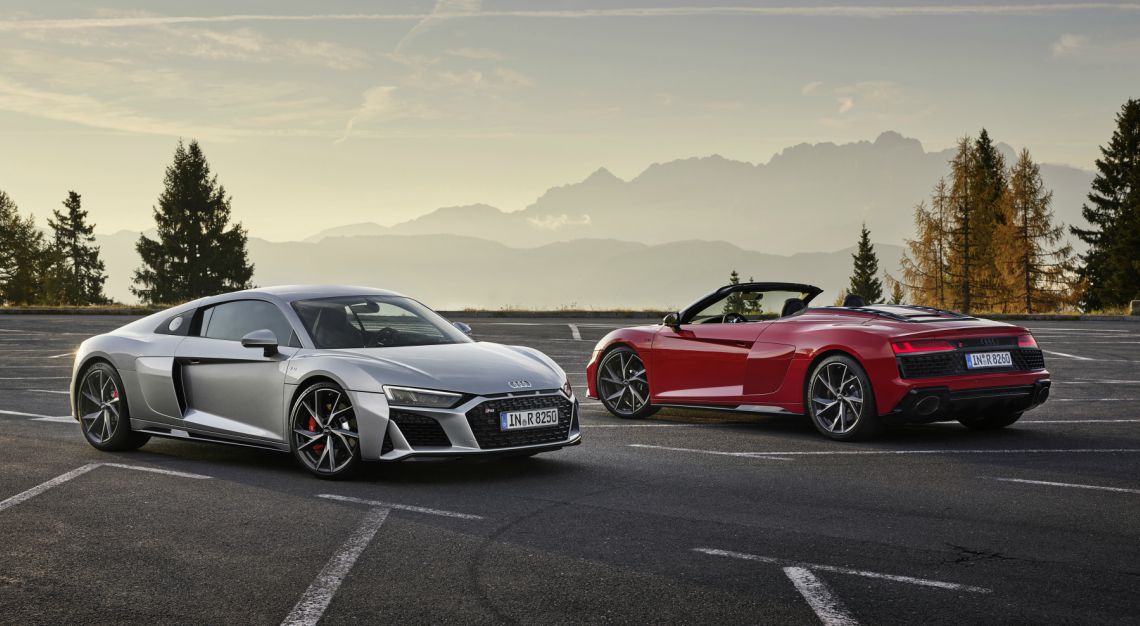The 1,016 hp hybrid coupe and convertible have the most efficient aerodynamic performance of any production Prancing Horse to date
Enzo Ferrari famously preferred his racing cars to his road cars. Ferrari’s road-car business was established to help fund his passion for racing; performance on the track was all that really mattered to Enzo. It’s fascinating to ponder, then, what the man they called Il Commendatore (the commander), would make of the new Ferrari SF90 XX Stradale coupe and XX Spider. Because these are, according to Ferrari marketing chief Enrico Galliera, road-legal racing cars.
“SF90 XX combines the best of our road cars with the best of our racing experience,” Galliera says. And that’s no idle boast: Based on the scintillatingly quick coupe and convertible versions of the Ferrari SF90, the SF90 XX adds power-train, chassis, and aerodynamic technologies proven on the racetrack in Ferrari’s innovative XX Programme, which enables customers to drive specially developed track-only Prancing Horses at Ferrari-organised events around the world.
The SF90 XX has the same hybrid power-train layout as the regular SF90, the output of its 4.0-liter twin-turbo V-8 augmented by three electric motors—one mounted between the internal-combustion engine and the eight-speed dual-clutch transmission driving the rear wheels, and one driving each front wheel.
With the new variants, the power train makes 1,016 hp, 30 hp more than in the original SF90, with the internal-combustion engine making 17 hp more than before thanks to new pistons, re-machined combustion chambers, an increased compression ratio, polished inlet and exhaust tracts, and improved cooling.
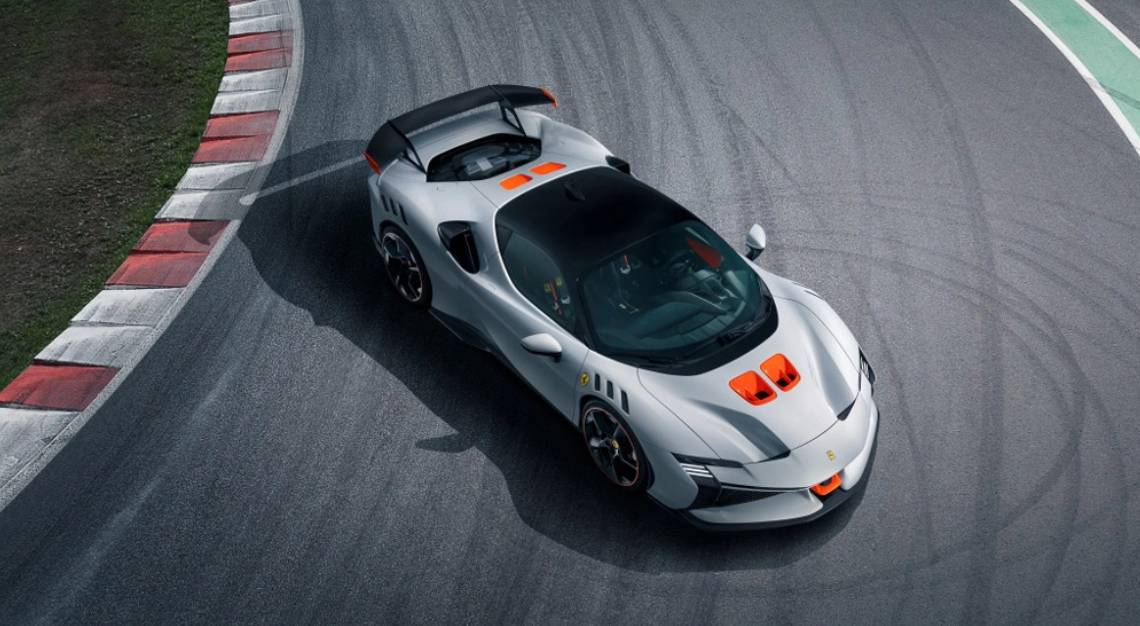
The three e-motors make a total of 13 hp more and are powered by the mid-mounted 7.9 kW/h lithium-ion battery, which helps propel the SF90 XX up to 135 km/hr for 24 kilometres on electricity alone. More importantly, they help the SF90 XX storm from a standstill to 97 km/hr in a tick over two seconds, hit 200 km/hr in 6.7 seconds, and reach a top speed of 322 km/hr.
But straight-line performance is just part of the story. A new antilock brake system dubbed ABS EVO, a Formula 1–style power boost function called Extra Boost, and dramatic new aerodynamic upgrades, mean the SF90 XX is significantly quicker around a racetrack than the base model. How much quicker? Ferrari’s development driver Raffaele de Simone won’t elaborate just yet, other than to say Extra Boost alone is worth about a quarter of a second per lap around Ferrari’s legendary Fiorano test track.
Fittingly named, Extra Boost uses the e-motors to provide just that in discrete bursts of up to two seconds each. It’s only available with the manettino set to Qualifying Mode, and will only initiate when the accelerator pedal is fully depressed and the car knows it has enough of a charge in the battery and sufficient traction. The system will dispense up to 30 two-second bursts from a full battery, and drivers can keep track of how many they have used via a display on the dash.
ABS EVO is an evolution of the braking system that debuted on the 296 GTB. It was developed to allow even non-expert drivers to trail-brake deep into corners like a pro, making the most of the prodigious stopping power of the SF90 XX’s massive carbon-ceramic brakes.
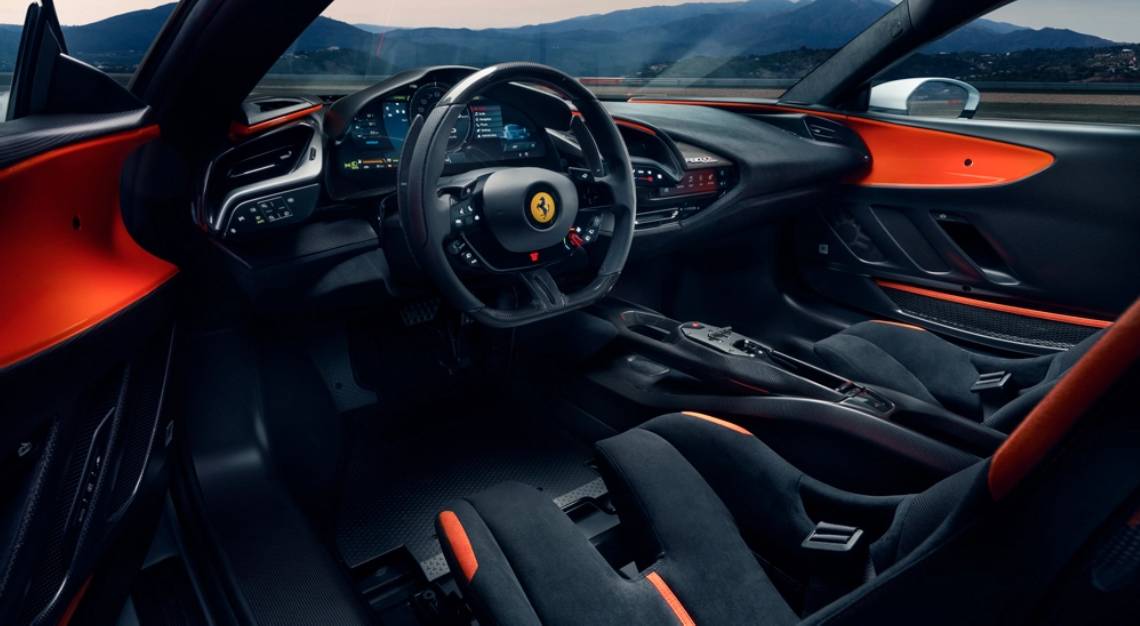
Extra Boost means this new coupe and convertible are quicker out of corners than the original, while ABS EVO makes it quicker into the corners. On top of all that, the marque’s chief product development officer, Gianmaria Fulgenzi, asserts that the SF90 XX delivers the most efficient aerodynamic performance of any road car in Ferrari’s history. Says Fulgenzi, “There is not one single centimeter of the car that has not been optimised for aero.”
The most obvious piece of aerodynamic hardware is the large rear wing, which increases rear-axle downforce by 110 kilograms. And two hood vents form part of an S-duct system that enhances front-axle downforce by 20 percent.
Less obvious is the new front splitter, a revised front floor, and the innovative stop-Gurney system, in which the panel between the rear wing stanchions lowers to expose a Gurney flap that increases rear-axle downforce under braking. At high speeds, the panel returns to sit flush with the trailing edge of the rear bodywork to reduce drag.
Overall, the SF90 XX develops 530 kilograms of downforce at 250 km/hr, a 36 per cent increase over the standard car at the same speed. That, combined with revised steering, increased spring stiffness, and a lower rear ride height, makes this Ferrari feel confidence inspiring through fast fifth- and sixth-gear corners, at least according to de Simone, who adds, “the car is very predictable compared with the SF90.”
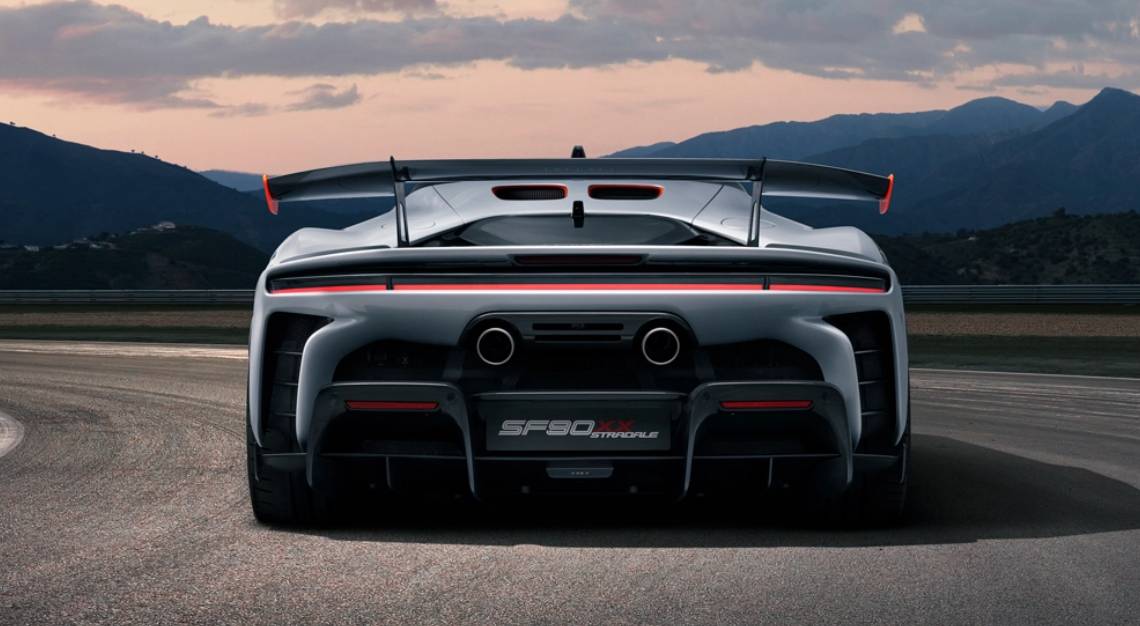
Inside, simple trim on the door panels, center console, and floor, combined with lashings of carbon fibre make performance intentions clear. It’s hardly spartan, though, with Alcantara on the dash and new sports seats—the latter featuring adjustable backrests and weighing approximately one kilogram lighter than the non-adjustable sports seats of the earlier SF90.
Those who like open-top motoring will be pleased to note that the SF90 XX Spider demands few compromises. The car weighs just 100 kilograms more than the coupe, but has the same dynamic performance, Ferrari says. And the retractable hardtop can be raised or lowered in just 14 seconds at speeds of up to 45 km/hr.
Only 799 examples of the SF90 XX Stradale and 599 of the SF90 XX Spider will be built, and all are already sold. The first coupes are expected to arrive Stateside in the second quarter of 2024, with the first of the convertibles following in early 2025.
This story was first published on Robb Report USA



